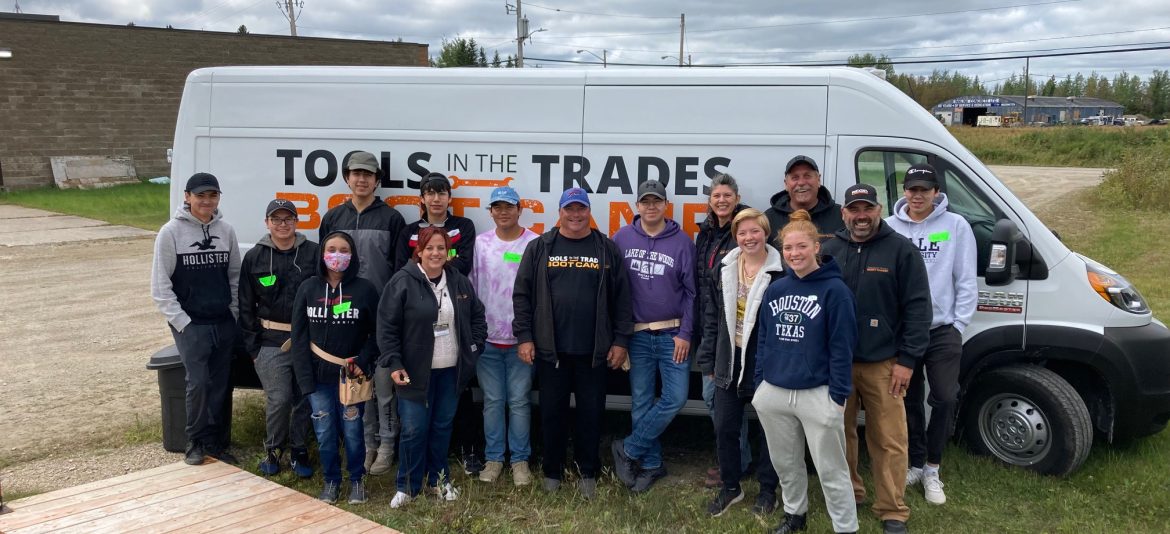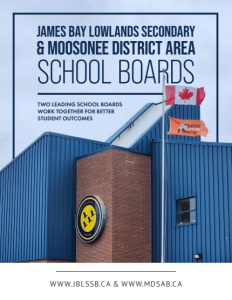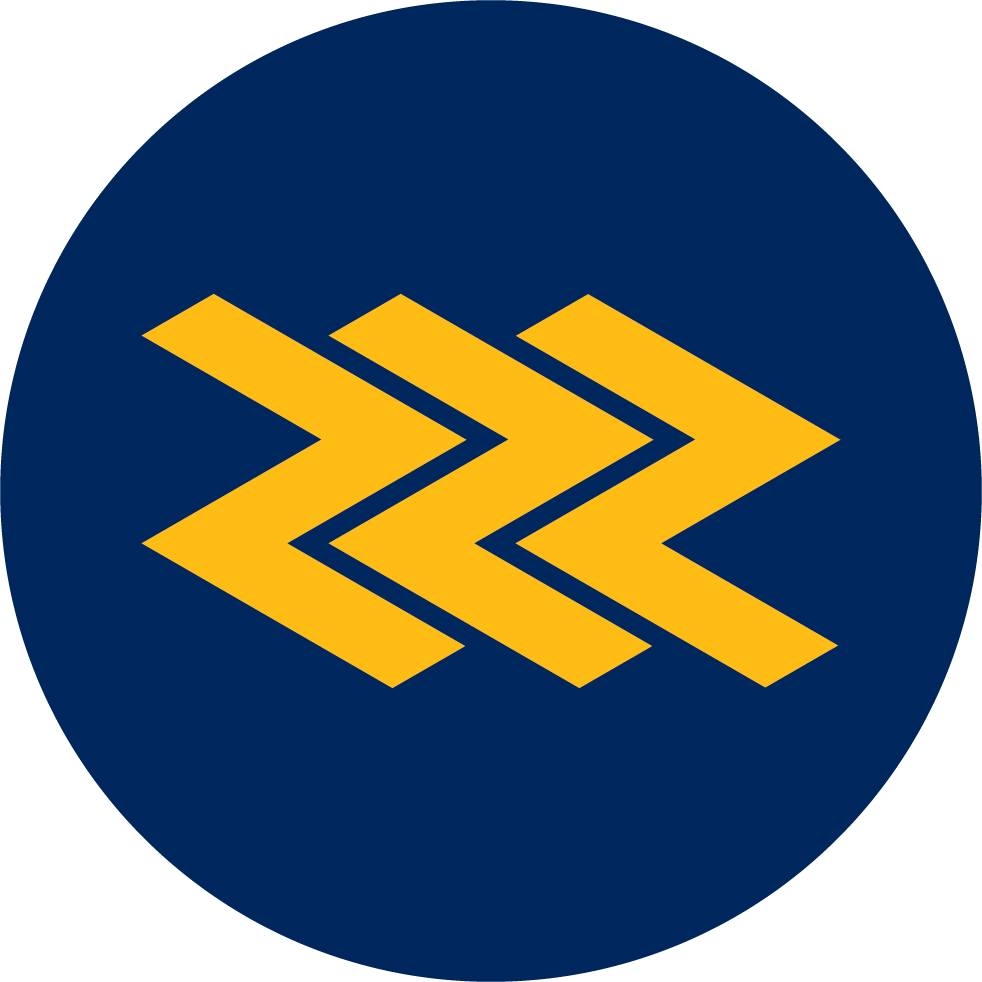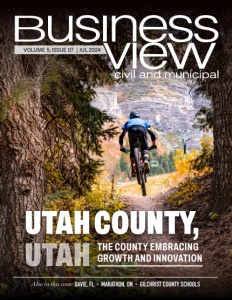James Bay Lowlands Secondary School Board & Moosonee District Area School Board
Two Leading School Boards work together for better student outcomes
Providing powerful learning opportunities and environments
Moosonee is a town in the Cochrane District of northern Ontario, Canada, located on the banks of the Moose River at the southern end of James Bay. Directly across from Moosonee is Moose Factory, a First Nations reserve community, located on Moose Factory Island. Together, the population of both communities is about 6,000, almost all of whom identify as Mushkegowuk Cree.
There are three schools in Moosonee, each of which is administered by a separate School Board. The Moosonee Public School, grades JK-8, has approximately 275 students and is overseen by the Moosonee District School Area Board; the Bishop Belleau School, with a population of 75, operates under the Northeastern Catholic District School Board; and Northern Lights Secondary School, has about 180 students, and is managed by the James Bay Lowlands Secondary School Board.
A new Director of Education
In April 2022, Ontario’s Ministry of Education appointed Angela Tozer as Director of Education for both the Moosonee and James Bay Lowland districts. “We used to be two separate entities in all aspects,” Angela recounts. “Approving a Director of Education permitted us to align between JBLSSB and MDSAB to try and do as much as we can with the Boards and our trustees collaborating. This is the 73rd Director position in the province, and with this position being approved, the message to all is that our students and our schools do matter. We’re part of the provincial education system. And we now have a voice, which is very important. We’re included, which didn’t always happen in provincial education initiatives.”
The same, yet different
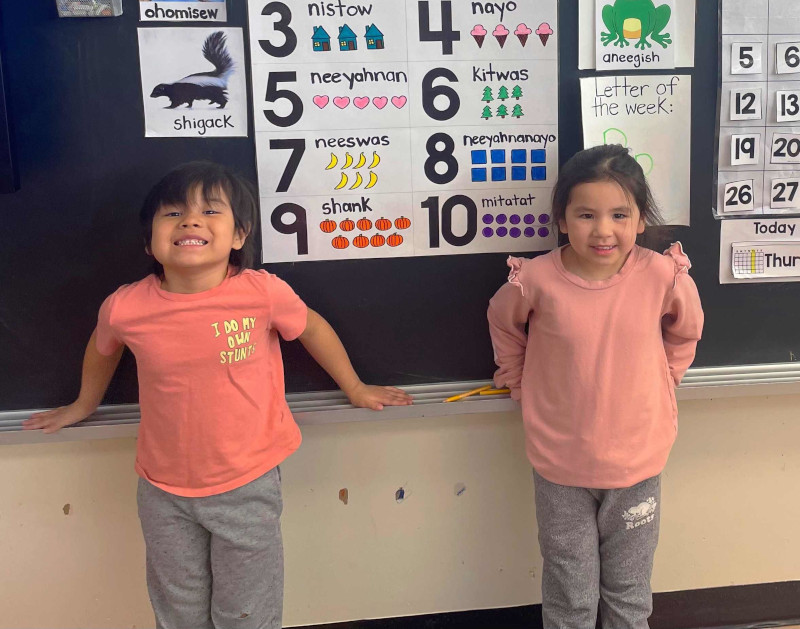
For Tozer and the two Boards, there’s a delicate balancing act in play. On the one hand, having a seat at the table means that they no longer consider themselves distinct from all the other school districts in Ontario. “We always thought that we were different,” Angela reveals. “And we’re not different. We’ve got awesome students, staff, and schools up here.” In fact, in many ways, the two schools are very much in line with modern pedagogic practices elsewhere.
The learning opportunities in Moosonee have unique character, challenges, and possibilities, which means our education system will reflect those components.
“It’s a different context, for sure, but different doesn’t mean better or worse. And what we’re really about here is learning preparedness and well-being. And our two main priorities are meaningful, authentic, valuable connections, and powerful learning opportunities and environments.”
One aspect, in which the schools are “different” in this remote section of Indigenous Canada, is their focus on authentic and meaningful teaching when it comes to the culture and history of the area. “We work with our staff to ensure that any learning that’s happening in our schools takes into account the cultural aspects of our work up here,” says Carman Tozer, Indigenous Lead for James Bay Lowlands Secondary School Board.
“Between 90-95 percent of our Indigenous students have relatives – grandparents, an aunt or uncle – that have attended a Residential School. We had several in our area. (Residential schools were government-sponsored religious schools that were established to assimilate Indigenous children into Euro-Canadian culture.) To this day, we’re still dealing with some of the ramifications of that. We were going through a phase where we had a lot of trauma-informed approaches in our teaching and our methodology. We’re now gradually shifting over to more of a healing-centered engagement and using a culturally sustainable pedagogy approach. That’s the underlying theme. When we do our teaching, we have to keep in mind that a lot of our teachers are not from our community; they’re from other parts of Ontario, Canada, or the world. We do a lot of work with them to ensure that they’re using a culturally appropriate methodology in the classroom.”
Speaking of those teachers from other places, Angela explains that one of the unique responsibilities of the School Board is housing them since there are no market rental accommodations available in either Moosonee or Moose Factory.
“The high school has 23 housing units and our elementary panel has 16, so we have places for our staff to live when they come to work here,” she states. Some who come are teachers in training from Laurentian University in Sudbury; others come from Queens University’s Indigenous Studies Department, which has an Indigenous teacher education program for K-6. “We have three sisters working in our school, right now, that have gone through the program. They love our schools. There are so many opportunities for professional growth.”
Early childhood through high school
Starting with early childhood, there is an early learning kindergarten (ELK) program for four-year-olds, and a partnership with the Aboriginal Head Start in Urban and Northern Communities (AHSUNC) program, funded by the Public Health Agency of Canada, which supports the spiritual, emotional, intellectual, and physical development of Indigenous children, while supporting their parents and guardians.
A partnership is with Payukotayno James and Hudson Bay Family Services, which serves communities located along the western James Bay coast. It is one of 47 Children’s Aid Societies in Ontario that protects children from physical, sexual, and emotional abuse and neglect, while also providing parents and caregivers with the support they need to build healthy families.
The district’s elementary school has a STEM curriculum and Angela reports that the school is well-equipped with technology. “Our teachers are engaging with smart boards, and we learn digitally,” Angela says. “We have Google School Care. We use the Google platform – Google Docs, any of the Google software, Google Read and Write — for students. Technology is a way to learn and support learning and we educate our students on its safe and appropriate use.
“Moosonee and Moose Factory is a fairly remote location that’s only accessible by train or plane and by ice road in the wintertime,” says Carman.
“When we went through COVID, like everyone else, schools were closed and we were concerned about how our students were going to access the learning that was taking place in schools, and, in cooperation with various organizations and businesses, we were able to ensure that 100% of our students had access to the internet, had access to the technology to utilize it for learning. We carried that on so our teachers and students and parents now recognize that technology, not only in and of itself is a valuable learning experience, but it’s also a tool that we can utilize as we proceed through our different pathways in life.”
“30-40 percent of our high school students transport daily from Moose Factory Island by helicopter, boat, and ice road. So, if we have fog or high tide, or weather conditions like freezing rain, helicopters can’t fly,” adds Angela. “But because we are a well-established Google School, learning continues. Anything that’s happening in their courses in the secondary panel is on the Google Classroom. So, our students can participate, live-time, in their lessons. Our staff is very well-versed in using that platform to support learning.”
In addition to making sure that its students always have access to their lessons, the Board is equally concerned about its students’ well-being, something Angela says many struggle with: “Our schools have two counselors and our percentage rates for daily support are very high. And we now have funding in place to offer free lunch at our high school; we already have a free breakfast program.” Angela adds that providing safe and supportive spaces for the students to learn extends beyond the school day. In high school, there is a soccer program that begins right after dismissal.
“Everybody’s included,” she says. “We delay our transportation so that everybody can participate. And we have community partners like OPP (Ontario Provincial Police) officers. Anyone who comes in as a resource joins the teams to develop those healthy relationships. At the elementary level, there is a gardening club, a running club, and basketball. There are a lot of safe activities for our students to grow and prosper.”
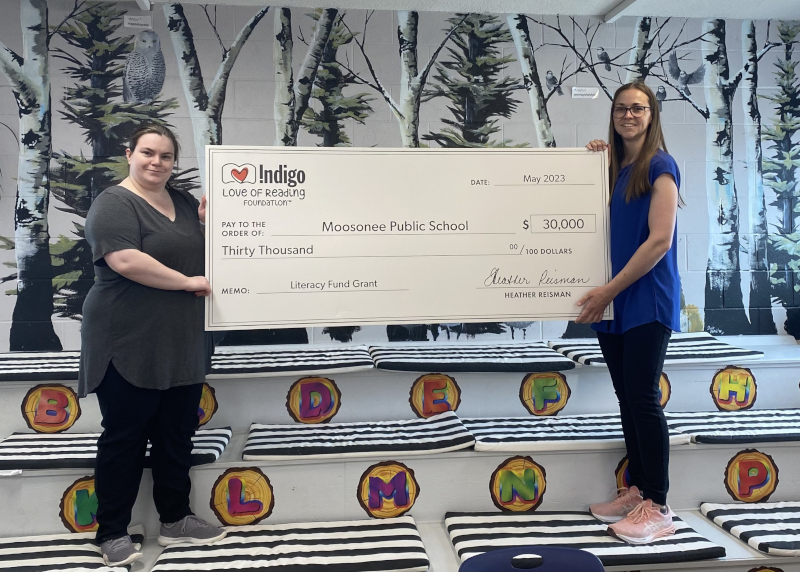
Post-secondary options
After high school, some students go on to college or university, and some go to work. The JBL Board tries to offer some real work experience for them before graduation. “We try to get placements with our Municipal Public Works, our hospital, and our healthcare centers,” says Carman. “We have students that are placed at our water and wastewater facility. In almost every aspect of what’s available to do in Moosonee and Moose Factory, we have students who are in those areas. Like the rest of the province, we do struggle with issues of qualified tradespeople within our communities, so we have representatives who do day-long workshops in skilled trades. They bring electrical and plumbing materials for the students to practice hands-on skills within the trades. It’s nice to have someone come in and say ‘This is an opportunity for you to explore.”
“And there’s our WAHA (Weeneebayko Area Health Authority) Redevelopment project – they’re building a new hospital here in our community. And, hopefully, when this project is over in five years, we’ll have a group of people within our community, who are current students, who will be qualified to provide the services required to maintain that hospital — electricians, plumbers — in addition to all the healthcare staff that you traditionally would associate with a healthcare facility. For those students interested in healthcare, there is a special skills high school major in health and wellness, that’s been in place for 14 years.
College for some of the graduates, has in the past, been a difficult experience. “About eight years ago, 77% of our students that had gone out to post-secondary programs returned to the community by October,” says Angela. “So, we have added into the timetable a learning strategies course to get our students equipped to make that transition. They research places to go, look at the pros and cons, the connections, financing, and work with First Nations to see what sponsorships look like. Now, we’re not having that crazy high percentage of not being successful when they leave.”
The Board also promotes college inspection tours. Recently some students visited schools in Northern Ontario: Northern College in Timmins, Laurentian and Cambrian in Sudbury, and Canadore and Nipissing University in North Bay. “Our students tend to do better in post-secondary programs if they’re closer to home,” says Carman. “It’s not always feasible for parents to take students to visit a campus,” Angela adds.
“We have three staff who have taken them out. These are grade-11 students who are thinking about applying. And we’ve also included our grade-12 students that have confirmed offers. And next week, all of our grade-10 students will be heading out on the train to spend two nights in residence at Northern College and participating in ‘go-to-college’ activities.”
An old infrastructure gets upgrades
The Board must also contend with a particularly aging infrastructure, as both the elementary school and the high school are relics from the middle of the last century. “We’ve taken on, over the last couple of years, the greening of the school grounds,” Angela reports.
“We’ve had difficulties with drainage; redoing parking lots; wheelchair accessibility; and putting up new fencing at our elementary, which included a kindergarten area. We had issues with vandalism, so we put in some very, very bright lights in the back of the school grounds. We re-did the track to provide better spaces for our students to participate in physical learning. We are having a new playground structure installed this July.”
“Our elementary school was built in the 1960s,” Angela continues. “And because there are cast iron pipes underneath, the whole sewer system went down, and we had to redo the whole system. With COVID, there were air quality concerns. Our Board was approved for some money to do an HVAC project, which is very costly up here. So, we’ve got a part of that done and part of that project too, was to put in a new lower roof because it was leaking very, very badly. On top of that, the housing units need a lot of things – windows, and siding. It gets to minus-40 up here, so not only do we need to provide housing, we need to provide energy-efficient housing.”
Challenges and opportunities
Going forward, Carman says that an upcoming challenge, or maybe an opportunity, will be how the school system adapts to the expected increase in the number of people who will be moving to the community to work at the new hospital once it’s up and running. “We’re looking at an employment workforce of another three to four hundred people working at the hospital and they’re coming here with their families,” he muses. “So, we need to start thinking now of how we are going to accommodate those families in our school system because right now, we are pretty much at capacity.”
Angela focuses on the positive and sees more good things to come: “We’re kind of ahead on most things that happen in our school to support literacy, numeracy, and well-being,” she states.
“Everyone’s on board and we’re getting so much traction and forward momentum. There’s a great learning culture up here, K-12. We have got the best possible learning structures for better outcomes for students. So, it’s exciting.”
AT A GLANCE
James Bay Lowlands Secondary School Board & Moosonee District Area School Board
WHAT: Two local school boards
WHERE: Moosonee and Moose Factory, Ontario, Canada
WEBSITES: www.jblssb.ca & www.mdsab.ca
